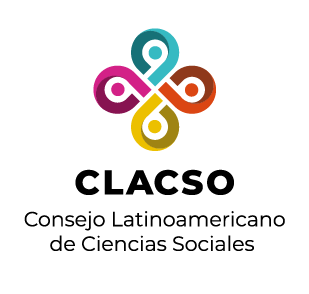Red de Bibliotecas Virtuales de Ciencias Sociales en
América Latina y el Caribe

Por favor, use este identificador para citar o enlazar este ítem:
https://biblioteca-repositorio.clacso.edu.ar/handle/CLACSO/234879| Título : | Narrar y describir: ékphrasis, relato e imagen en el centón Christus Patiens Narrate and describe: ékphrasis, story and image in the cento Christus Patiens |
| Palabras clave : | ekphrasis;description;narratology;cento literature;iconography;écfrasis;descripción;narratología;literatura centónica;iconografía |
| Editorial : | Facultad de Filosofía y Letras, Universidad de Buenos Aires |
| Descripción : | La época de los emperadores Comnenos (1081-1204) se caracterizó por un predominio de la prosa narrativa, plasmada en la novela, en los relatos hagiográficos y en las crónicas históricas. Durante el mencionado período, gracias a la influencia de intelectuales del siglo XI como Mauropos o Psellos en la corte constantinopolitana, se constata un renacimiento de la actividad artística y literaria, especialmente en relación con la tradición clásica. Varios especialistas de los estudios bizantinos ubican hoy en este período la redacción del centón Christus Patiens. Aunque adscripto al género dramático, el texto admite la aplicación de lineamientos teóricos en torno a la narración y a la descripción. Objetivo de este artículo será centrarse en el análisis narratológico e iconográfico en la escena doble de la herida del costado, ubicada en el momento de la muerte de Cristo y en el inicio de la escena de la sepultura. La hipótesis de lectura afirma que la repetición del motivo de la herida indica, a nuestro entender, la voluntad de resaltar una conjunción paradójica entre lo somático y lo dogmático, sostenida a su vez por una red intertextual proveniente de la tragedia euripidea. A tal fin, entre otro de los objetivos, resaltaremos recursos –como el de la focalización– que alternan entre la narración y la ékphrasis. En las conclusiones de nuestro análisis sostenemos que estos procedimientos se revelan como productores de imagen de gran relevancia dentro de la poética del centón. The era of the Comneno emperors (1081-1204) was characterized by a predominance of narrative prose, embodied in the novel, in hagiographic stories and in historical chronicles. During the aforementioned period, thanks to the influence of 11th-century intellectuals such as Mauropous or Psellos in the Constantinopolitan court, there is a revival of artistic and literary activity, especially related to the classical tradition. Today, several specialists from Byzantine studies place the writing of the Christus Patiens cento in this period. Although attached to the dramatic genre, the text admits the application of theoretical guidelines around narration and description. The objective of this paper will be to focus on the narratological and iconographic analysis in the double scene of the wound on the side, located at the time of Christ’s death and at the beginning of the burial scene. The reading hypothesis states that the repetition of the reason for the injury indicates, in our opinion, the desire to highlight a paradoxical conjunction between the somatic and the dogmatic, sustained in turn by an intertextual network from the Euripidean tragedy. To this end, among other objectives, we will highlight some resources –such as focalization– that alternate between narration and ekphrasis. In the conclusions of our analysis we maintain that these procedures are revealed as producers of image of great relevance within the poetics of the cento. |
| URI : | https://biblioteca-repositorio.clacso.edu.ar/handle/CLACSO/234879 |
| Otros identificadores : | http://revistascientificas.filo.uba.ar/index.php/afc/article/view/10019 10.34096/afc.i33.10019 |
| Aparece en las colecciones: | Secretaría de Investigación y Posgrado - SIPFyL/UBA - Cosecha |
Ficheros en este ítem:
No hay ficheros asociados a este ítem.
Los ítems de DSpace están protegidos por copyright, con todos los derechos reservados, a menos que se indique lo contrario.